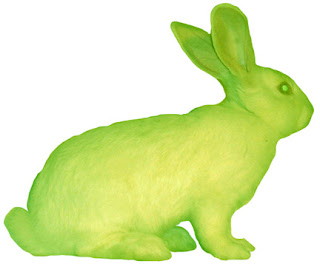Week 6 : BIOTECH & ART
For me, this week's topic seemed to teach us more deeply what we learned in the lecture last week. As the scientists developed their knowledge of the biotechnologies, the artists used their knowledge to show the people the new art world. Moreover, this new art inspired scientists to create more and more new biotechnologies as Levy mentions the effect of art, “Art in its broadest sense has been one way to acclimatize the public to new scientific discoveries and new technologies.” For example, Joe Davis's project, called Audio Microscope, allows the people to hear individual cells using cell structure and sound to show how the art can encompass the cellular level mechanisms. His project has played a very important role not only in creating new forms of art that integrate biology, but also in completely changing the focus of the scientists.
However, there have been many comments about the use of animals by scientists and artists to further develop biotechnology or to make their new works. For instance, High noted that biotechnology has had a profound impact on scientific developments such as transgenic rats, which help the scientists explain the medical mysteries. On the other hands, Although the Kac’s project, known as GFP bunny, has succeeded in making genetically modified rabbits using fluorescent jellyfish genes, some people believe that transforming the genes of living organisms for the purpose of art is an act that ignores the animal rights. The reason for the controversy about the works using biotechnology is that there is relatively insufficient research on understanding the new field, which makes it hard for the people to see the exact facts, as Kelty said, “Outlaw biology (and hacker and Victorian biology) is not simply illegal or criminal, but before the law, outside it, engaged in problems which the law, and our understandings of what is right and wrong, have not yet become routine or recognizable.”
Of course, we should pursue to a society where art and biotechnology are advanced in a way that ethically does not threaten animal life.
Reference
1 - Davis, Joe, “Audio Microscope” Design | Media Arts 98T Genetics and Culture. UCLA, n.d. Accessed 19 May 2018
<http://geneticsandculture.com/genetics_culture/pages_genetics_culture/gc_w03/davis_audio_scope.htm>
2 - High, Kathy. "All About Transgenic Rats." Embracinganimal.com. Kathy High, n.d. Accessed 19 May 2018.
<http://www.embracinganimal.com/>.
3 - Kac, Eduardo. "GFP Bunny." GFP BUNNY. Eduardo Kac, n.d. Accessed 19 May 2018. <http://www.ekac.org/gfpbunny.html#gfpbunnyanchor>
4 - Kelty, Chris. "Meanings of Participation: Outlaw Biology?" (n.d.): n. pag. Accessed 19 May 2018.
5- Levy, Ellen K. "Defining Life: Artists Challenge Conventional Clasifications." (n.d.): n. pag. Accessed 19 May 2018.
Imagine
Figure1 - Kac, Eduardo. "GFP Bunny." GFP BUNNY. Eduardo Kac, n.d. Accessed 19 May 2018. <http://www.ekac.org/gfpbunny.html#gfpbunnyanchor>
Figure2 - Davis, Joe, “Audio Microscope” Design | Media Arts 98T Genetics and Culture. UCLA, n.d. Accessed 19 May 2018
<http://geneticsandculture.com/genetics_culture/pages_genetics_culture/gc_w03/davis_audio_scope.htm>
Figure3 - High, Kathy. "All About Transgenic Rats." Embracinganimal.com. Kathy High, n.d. Accessed 19 May 2018.
<http://www.embracinganimal.com/>.






댓글
댓글 쓰기